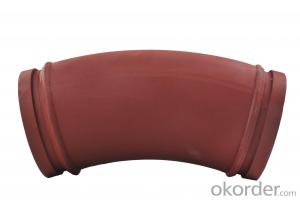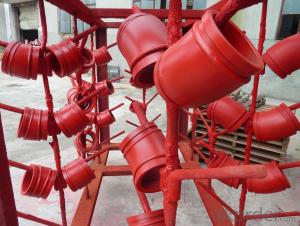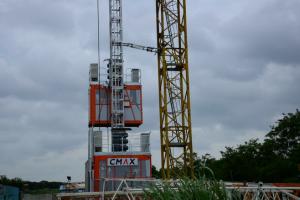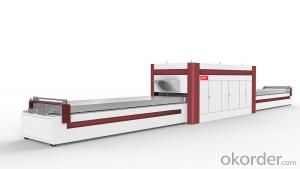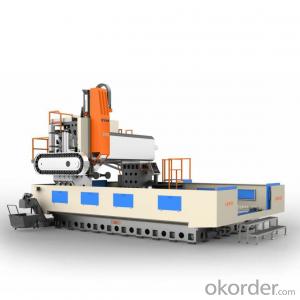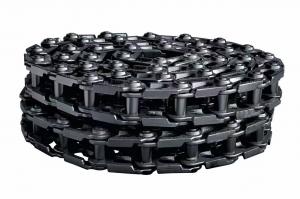Twin Wall Elbow for Concrete Pump R385 29DGR
- Loading Port:
- Tianjin
- Payment Terms:
- TT or LC
- Min Order Qty:
- 10 pc
- Supply Capability:
- 3000 pc/month
OKorder Service Pledge
OKorder Financial Service
You Might Also Like
Product Description:
Product Name: Twin Wall Elbow for Concrete Pump R385 29DGR
Specification
Twin Wall Elbow (Twin Wall Flange)
Material: Q235 (outside) + GCr15(inside)
Thickness: 3mm (outside) + 9mm (inside)
Technology: Quenching under high temperature
Characteristics: the inner rigidity to 63 HRC; the outside has so high toughness to keep the inner.
Matched with: Twin wall flange, Alloy (GCr15) + 20#
Working Pressure:170bar
Service life: above 60,000 cubic meters.
3. Application
Concrete delivery.
4. Package
Put into containers.
FAQ:
Q1: Why buy Materials & Equipment from OKorder.com?
A1: All products have its ISO certifications, adheres to the highest standards and a commitment to supply chain safety and customer satisfaction.
Q2: How do we guarantee the quality of our products?
A2: We have established an advanced quality management system which conducts strict quality tests at every step, from raw materials to the final product. At the same time, we provide extensive follow-up service assurances as required.
Q3: How soon can we receive the product after purchase?
A3: Within three days of placing an order, we will begin production. The specific shipping date is dependent upon international and government factors, but is typically 10 to 30 workdays.
Q4: If we can produce Twin Wall Elbow for Concrete Pump R385 29DGR according to customers request?
A4: Yes, we can produce Twin Wall Elbow for Concrete Pump R385 29DGR according to the difference country situations to make it suitable to the market and customers. We have very professional technical team to make the design.
Q5: How to make a quick resolution for after service?
A5: We have overseas branches all-around of world, If needed, the seller shall dispatch 2 engineers to the buyer's site for supervision of training. The buyer shall make available of necessary facilities &skilled personnel at site for training.
Images:
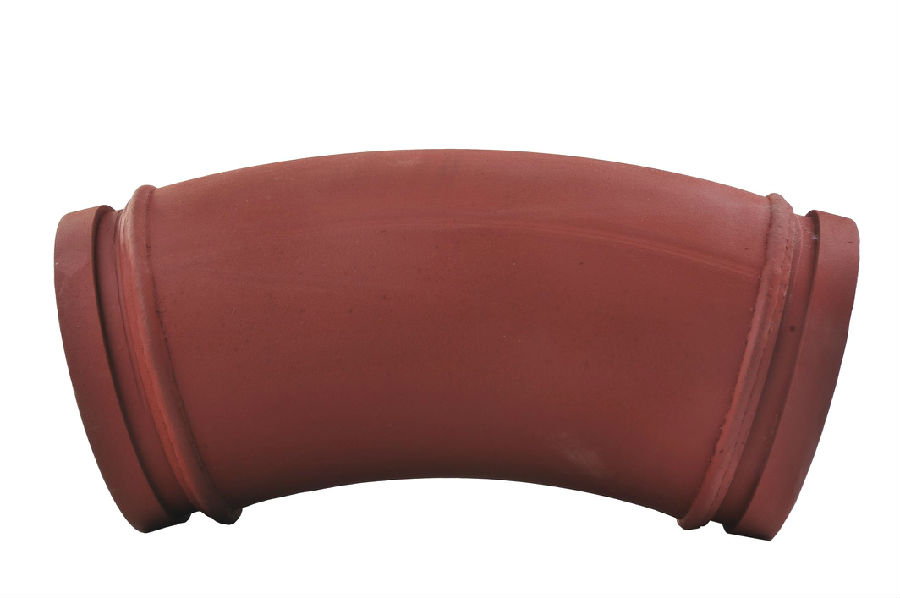
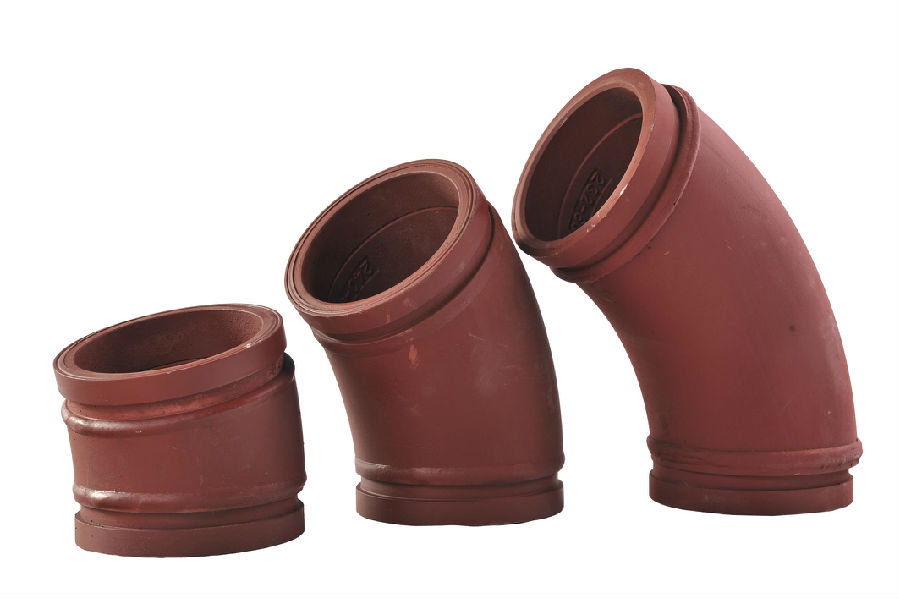
- Q:Can concrete pump spare parts be purchased online?
- Yes, concrete pump spare parts can be purchased online. There are various online platforms and websites that specialize in selling construction equipment and spare parts, including concrete pump spare parts. These online stores offer a wide range of options and brands, allowing customers to browse and select the specific spare parts they need for their concrete pump. Additionally, online purchasing provides the convenience of comparing prices, reading customer reviews, and having the spare parts delivered to your doorstep. However, it is essential to ensure the authenticity and reliability of the online store before making a purchase to ensure that you are getting genuine and high-quality spare parts.
- Q:What are the advantages of using stainless steel components in concrete pump spare parts?
- There are several advantages of using stainless steel components in concrete pump spare parts. Firstly, stainless steel has excellent corrosion resistance, which ensures the longevity and durability of the spare parts even in harsh environments. Secondly, stainless steel is known for its high strength-to-weight ratio, providing increased strength and reliability without adding excessive weight to the concrete pump. Additionally, stainless steel is highly resistant to wear and tear, which reduces the need for frequent replacements and maintenance. Lastly, stainless steel components offer a hygienic and clean surface, making them suitable for applications in the construction industry where cleanliness is crucial.
- Q:How can one determine the correct viscosity and temperature range for lubricants used in concrete pump spare parts?
- Determining the appropriate viscosity and temperature range for lubricants used in concrete pump spare parts requires the consideration of multiple factors. Below are some steps that can assist in determining the suitable viscosity and temperature range: 1. Refer to the manufacturer's recommendations: To begin with, consult the specific guidelines or recommendations provided by the manufacturer for the concrete pump spare parts. The manufacturer may specify the required viscosity and temperature range for the lubricants used in their equipment. 2. Gain a clear understanding of the operating conditions: It is essential to have a comprehensive understanding of the operating conditions in which the concrete pump spare parts will be utilized. Factors such as ambient temperature, pump speed, load, and pressure should be taken into account. These factors can significantly impact the viscosity requirements and temperature range of the lubricant. 3. Assess the performance characteristics of the lubricant: Different lubricants possess distinct performance characteristics that make them suitable for particular applications. Look for lubricants specifically formulated for heavy-duty tasks, offering excellent wear protection and displaying good thermal stability. These performance characteristics ensure that the lubricant can endure the demanding conditions of a concrete pump. 4. Viscosity requirements: The viscosity of the lubricant plays a crucial role in ensuring proper lubrication and safeguarding of the concrete pump spare parts. Heavy-duty applications generally require higher viscosity lubricants, while lighter loads may be better suited with lower viscosity lubricants. The viscosity requirements may also differ depending on the specific pump parts, such as bearings, gears, or seals. Referring to the manufacturer's guidelines and seeking advice from lubricant suppliers can help determine the ideal viscosity range for the concrete pump spare parts. 5. Consider the temperature range: The temperature range within which the concrete pump operates is another significant aspect to consider. Lubricants should be capable of maintaining their viscosity and performance across the expected temperature range. Extreme temperatures can cause lubricants to lose their effectiveness, potentially leading to equipment damage or failure. Consequently, it is important to select lubricants with a temperature range suitable for the operating conditions of the concrete pump. 6. Consult with experts: If uncertainty persists regarding the appropriate viscosity and temperature range, it is advisable to seek advice from lubricant manufacturers, suppliers, or industry experts. They can offer valuable insights and recommendations based on their expertise and experience with concrete pump spare parts. By adhering to the manufacturer's recommendations, comprehending the operating conditions, evaluating the lubricant's performance characteristics, and seeking professional advice, it becomes possible to determine the correct viscosity and temperature range for lubricants used in concrete pump spare parts. This will ensure optimal lubrication and extend the lifespan of the equipment.
- Q:What are the different types of concrete pump hopper cylinders?
- There are primarily two types of concrete pump hopper cylinders: single-acting cylinders and double-acting cylinders. Single-acting cylinders have only one piston that pushes the concrete out of the hopper. On the other hand, double-acting cylinders have two pistons, one for pushing the concrete out and the other for bringing it back into the hopper.
- Q:Can concrete pump spare parts be replaced individually, or should they be replaced as a set?
- Typically, individual replacement of concrete pump spare parts is possible, eliminating the need to replace the entire set. This advantageous approach enables economical maintenance and repair of the pump. By solely replacing the faulty or worn-out part, operators can ensure the pump's optimal functionality without incurring unnecessary expenses. Furthermore, individual part replacement offers enhanced flexibility and customization since different components wear out at varied rates based on their usage. However, it is worth noting that some manufacturers may recommend replacing certain parts as a set or in specific combinations to achieve optimal performance. Consequently, it is always advisable to consult the manufacturer's guidelines or seek professional advice when replacing spare parts for concrete pumps.
- Q:How often should I replace concrete pump spare parts?
- The frequency at which you should replace concrete pump spare parts depends on various factors such as the quality of the parts, the intensity of usage, and regular maintenance. Generally, it is recommended to conduct regular inspections and maintenance to identify any signs of wear or damage in the spare parts. As a preventive measure, it is advisable to replace parts that show significant wear or are no longer functioning optimally. However, it is crucial to follow the manufacturer's guidelines and recommendations for the specific concrete pump model you are using. Additionally, consulting with experienced professionals or technicians in the field can provide valuable insights on the expected lifespan of different spare parts and when replacements may be necessary.
- Q:How often should hydraulic oil filters be replaced in a concrete pump?
- Hydraulic oil filters in a concrete pump should be replaced regularly according to the manufacturer's recommendations. Typically, it is recommended to replace hydraulic oil filters every 500 to 1,000 hours of operation or annually, whichever comes first. However, the specific replacement frequency may vary based on factors such as the operating conditions, environment, and the quality of hydraulic oil used. Regular maintenance and monitoring of the filter's condition can help determine the appropriate replacement interval to ensure efficient and reliable performance of the concrete pump.
- Q:How can a faulty pressure gauge affect the concrete pumping process?
- The concrete pumping process can be significantly affected by a faulty pressure gauge in various ways. To begin with, inaccurate readings from the gauge can result in an incorrect evaluation of the pressure within the system. Consequently, this can lead to the application of excessively high or low pressure during pumping, which can cause a range of issues. If the faulty pressure gauge displays a higher pressure than the actual value, it can result in the over-pressurization of the concrete pump. This can lead to potential damage to the equipment, such as burst hoses or pipes, which poses a danger to nearby workers. Additionally, excessive pressure can cause the concrete to be pumped forcefully, potentially resulting in material splattering or leaking from the delivery system. This leads to wastage and an uneven distribution of the concrete. On the other hand, an incorrectly low pressure reading from the faulty gauge can also create problems. Insufficient pressure within the pumping system can prevent the concrete from being adequately delivered to the desired location. This can cause delays in the construction process and result in uneven or incomplete concrete placement, which affects the integrity and strength of the structure being built. Moreover, a faulty pressure gauge can contribute to the inaccurate monitoring of the concrete's slump or consistency. The pressure gauge is commonly used as an indicator of the concrete's flowability. If the gauge is faulty, it can provide misleading information about the material's workability. As a result, the concrete mix can be either too fluid or too stiff, leading to difficulties in pumping and potentially compromising the quality of the finished concrete structure. In conclusion, a faulty pressure gauge can have severe consequences on the concrete pumping process. It can cause over-pressurization, material wastage, uneven distribution, construction delays, and compromised concrete quality. Therefore, it is crucial to regularly inspect and maintain pressure gauges to ensure their accuracy and reliability. This promotes safe and efficient concrete pumping operations.
- Q:What is the purpose of a concrete pump electric motor?
- The concrete pump electric motor serves the purpose of supplying the necessary power and energy to operate the concrete pump. By converting electrical energy into mechanical energy, the motor propels the hydraulic system of the pump. This hydraulic system is accountable for drawing in concrete from the hopper and propelling it through the pipes to the intended destination. Through its smooth and efficient operation, the electric motor guarantees precise placement of the concrete and enhances productivity at construction sites. Moreover, the utilization of an electric motor eradicates the requirement for manual labor and minimizes emissions in contrast to conventional diesel-powered pumps, thereby presenting a more environmentally conscious alternative.
- Q:How often do I need to replace concrete pump spare parts?
- The frequency of replacing spare parts for concrete pumps depends on several factors, such as the quality of the parts, how often the pump is used, and the maintenance practices followed. In general, if you use high-quality spare parts, they can last longer and won't need to be replaced as often. However, if the pump is used extensively or in harsh conditions, the spare parts may wear out more quickly. To ensure that your concrete pump performs well and lasts a long time, it's important to stick to a regular maintenance schedule. This includes checking the spare parts for any signs of damage, monitoring their performance, and replacing them when necessary. It's a good idea to consult the manufacturer's guidelines or get professional advice to determine how often you should replace the spare parts for your concrete pump. Remember, if you neglect proper maintenance or use low-quality spare parts, you may need to replace them more frequently, which can be expensive and disrupt your construction projects. So, it's worth investing in high-quality spare parts and following a diligent maintenance routine to maximize the lifespan of your concrete pump and minimize the need for replacements.
1. Manufacturer Overview |
|
|---|---|
| Location | |
| Year Established | |
| Annual Output Value | |
| Main Markets | |
| Company Certifications | |
2. Manufacturer Certificates |
|
|---|---|
| a) Certification Name | |
| Range | |
| Reference | |
| Validity Period | |
3. Manufacturer Capability |
|
|---|---|
| a)Trade Capacity | |
| Nearest Port | |
| Export Percentage | |
| No.of Employees in Trade Department | |
| Language Spoken: | |
| b)Factory Information | |
| Factory Size: | |
| No. of Production Lines | |
| Contract Manufacturing | |
| Product Price Range | |
Send your message to us
Twin Wall Elbow for Concrete Pump R385 29DGR
- Loading Port:
- Tianjin
- Payment Terms:
- TT or LC
- Min Order Qty:
- 10 pc
- Supply Capability:
- 3000 pc/month
OKorder Service Pledge
OKorder Financial Service
Similar products
New products
Hot products
Related keywords
